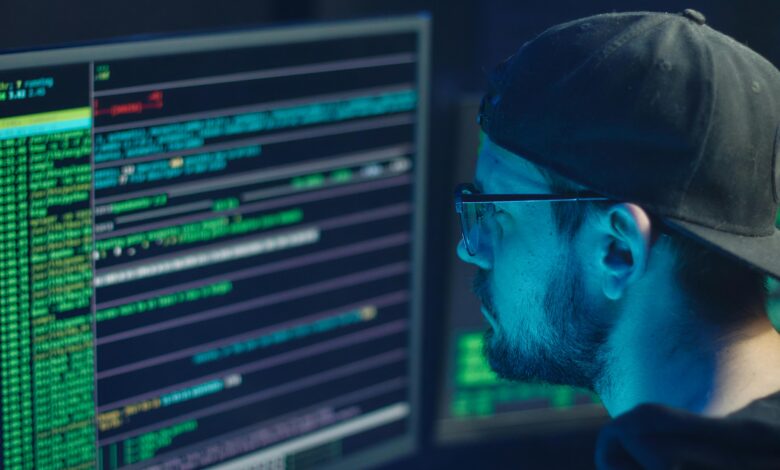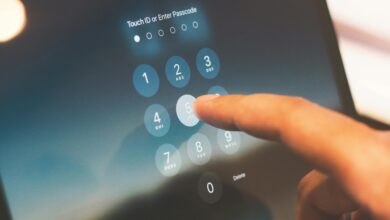The Future of Data Breach: Trends to Watch

In an increasingly digital world, cybersecurity has become a critical concern for individuals, businesses, and governments alike. As technology evolves, so do the threats that target our digital infrastructure. From sophisticated cyberattacks to emerging technologies like artificial intelligence (AI) and quantum computing, the future of cybersecurity is poised to undergo significant transformation. In this article, we’ll explore the key trends shaping the future of cybersecurity and what they mean for protecting our digital lives.
1. Artificial Intelligence (AI) and Machine Learning in Cybersecurity
How AI is Revolutionizing Cybersecurity
Artificial intelligence and machine learning are becoming indispensable tools in the fight against cybercrime. These technologies enable systems to detect anomalies, predict attacks, and respond to threats in real time—often faster than human operators.
Key Applications
- Threat Detection: AI algorithms can analyze vast amounts of data to identify unusual patterns or behaviors that may indicate a cyberattack.
- Automated Response: AI-powered systems can automatically isolate compromised devices, block malicious traffic, or patch vulnerabilities without human intervention.
- Phishing Prevention: Machine learning models can detect phishing emails by analyzing language patterns, sender behavior, and metadata.
Challenges and Risks
While AI enhances cybersecurity, it also creates new risks. Cybercriminals are increasingly using AI to launch more sophisticated attacks, such as deepfake scams or AI-driven malware. This arms race between defenders and attackers will intensify in the coming years.
Future Outlook
Expect AI to play an even larger role in proactive threat hunting, predictive analytics, and adaptive defense mechanisms. However, organizations must remain vigilant about securing their AI systems from exploitation.
2. Quantum Computing and Cryptography
The Threat of Quantum Computing
Quantum computers have the potential to break traditional encryption methods, rendering current cryptographic protocols obsolete. Algorithms like RSA and ECC, which rely on the difficulty of factoring large numbers, could be cracked in seconds by a sufficiently powerful quantum computer.
Post-Quantum Cryptography
To counter this threat, researchers are developing post-quantum cryptography (PQC) algorithms designed to withstand quantum attacks. These new encryption methods use mathematical problems that are resistant to quantum computation.
Preparation for the Quantum Era
Governments and organizations are already preparing for the quantum era by:
- Transitioning to quantum-resistant encryption standards.
- Investing in quantum-safe hardware and software solutions.
- Educating IT professionals about the implications of quantum computing.
Looking Ahead
While practical quantum computers are still years away, the transition to quantum-safe systems must begin now. Organizations that fail to adapt risk exposing sensitive data to future breaches.
3. Zero Trust Architecture
What is Zero Trust?
Zero Trust is a security model based on the principle of “never trust, always verify.” Unlike traditional perimeter-based security, which assumes everything inside a network is safe, Zero Trust treats every user, device, and application as potentially hostile until proven otherwise.
Why It’s Gaining Popularity
With remote work becoming the norm and cloud services replacing on-premises infrastructure, the traditional network perimeter has dissolved. Zero Trust provides a robust framework for securing distributed environments.
Implementation Strategies
- Multi-Factor Authentication (MFA): Require multiple forms of verification before granting access.
- Micro-Segmentation: Divide networks into smaller zones to limit lateral movement by attackers.
- Continuous Monitoring: Track user activity and system performance in real time to detect anomalies.
Future Implications
As cyberattacks grow more targeted and persistent, Zero Trust will likely become the default security model for enterprises. Expect increased adoption across industries, especially in sectors handling sensitive data like finance and healthcare.
4. Ransomware Evolution and Defense Strategies
The Growing Threat of Ransomware
Ransomware attacks have surged in recent years, with cybercriminals targeting critical infrastructure, hospitals, schools, and businesses. Attackers encrypt victims’ data and demand payment—often in cryptocurrency—for its release.
Emerging Tactics
- Double Extortion: Hackers not only encrypt data but also threaten to leak it unless additional ransoms are paid.
- Supply Chain Attacks: Compromising third-party vendors to infiltrate larger organizations.
- Ransomware-as-a-Service (RaaS): Cybercriminal syndicates offer ransomware tools to affiliates in exchange for a share of the profits.
Defense Measures
- Regular Backups: Maintain offline backups to restore data without paying ransoms.
- Patch Management: Keep all systems updated to prevent exploitation of known vulnerabilities.
- Employee Training: Educate staff about recognizing phishing attempts and other social engineering tactics.
The Road Ahead
Ransomware will remain a top threat, but advancements in detection, response, and international collaboration will help mitigate its impact. Governments are also cracking down on ransomware gangs through sanctions and law enforcement actions.
5. Internet of Things (IoT) Security
The IoT Explosion
The proliferation of connected devices—from smart thermostats to industrial sensors—has created a vast attack surface for cybercriminals. Many IoT devices lack robust security features, making them easy targets.
Common Vulnerabilities
- Weak or default passwords.
- Lack of firmware updates.
- Inadequate encryption during data transmission.
Securing the IoT Ecosystem
- Device Authentication: Ensure only authorized devices can connect to networks.
- Network Segmentation: Isolate IoT devices from critical systems to minimize damage in case of compromise.
- Regulatory Standards: Governments are introducing regulations to enforce minimum security requirements for IoT manufacturers.
Future Developments
As 5G networks expand and IoT adoption grows, securing these devices will be paramount. Innovations in edge computing and decentralized architectures may provide new ways to protect IoT ecosystems.
6. Privacy Regulations and Compliance
Stricter Data Protection Laws
Global privacy regulations like GDPR (General Data Protection Regulation) in Europe and CCPA (California Consumer Privacy Act) in the U.S. have set high standards for data protection. Non-compliance can result in hefty fines and reputational damage.
Emerging Trends
- Data Sovereignty: Ensuring data resides within specific geographic boundaries to comply with local laws.
- Consumer Control: Giving users greater control over how their data is collected, stored, and used.
- Cross-Border Challenges: Navigating conflicting regulations when operating in multiple jurisdictions.
Implications for Businesses
Organizations must invest in compliance programs, data governance frameworks, and privacy-enhancing technologies (PETs) to meet regulatory demands. Transparency and accountability will be key to building trust with customers.
7. Cybersecurity Workforce Shortage
The Talent Gap
Despite rising demand, there is a significant shortage of skilled cybersecurity professionals. According to industry reports, millions of cybersecurity jobs remain unfilled globally.
Addressing the Shortage
- Upskilling Programs: Provide training and certifications to existing employees.
- Diversity Initiatives: Encourage underrepresented groups to pursue careers in cybersecurity.
- Automation: Leverage AI and automation to handle routine tasks, freeing up human experts for complex challenges.
Future Solutions
Universities and tech companies are partnering to create specialized cybersecurity curricula. Additionally, gamified learning platforms and virtual labs are helping democratize access to cybersecurity education.
8. Cyber Warfare and Nation-State Attacks
The Rise of State-Sponsored Hacking
Nation-states are increasingly using cyberattacks as a tool for espionage, sabotage, and geopolitical influence. Targets include government agencies, critical infrastructure, and private corporations.
Notable Examples
- SolarWinds Attack: A massive supply chain breach attributed to Russian hackers.
- Colonial Pipeline Ransomware Attack: Disrupted fuel supplies across the eastern U.S., allegedly linked to Eastern European criminal groups.
Defensive Measures
- Public-Private Partnerships: Collaboration between governments and private sector entities to share threat intelligence.
- Critical Infrastructure Protections: Strengthening defenses around power grids, water systems, and communication networks.
- International Norms: Establishing global agreements to deter state-sponsored cyber aggression.
Looking Forward
As tensions escalate, cyber warfare will likely become more prevalent. Nations must invest in resilient cyber defenses while fostering diplomatic efforts to reduce conflict.
9. Decentralized Identity and Blockchain Security
Decentralized Identity Systems
Blockchain technology offers a promising solution for managing digital identities securely. Decentralized identity systems give users control over their personal information, reducing reliance on centralized databases vulnerable to breaches.
Benefits
- Enhanced privacy and data ownership.
- Reduced risk of identity theft.
- Interoperability across platforms and services.
Blockchain in Cybersecurity
Beyond identity management, blockchain can enhance cybersecurity by:
- Securing supply chains through immutable transaction records.
- Detecting tampering in software updates.
- Facilitating secure voting systems.
Future Prospects
While still in its early stages, decentralized identity and blockchain-based security solutions hold immense potential. Widespread adoption will depend on overcoming scalability and usability challenges.




